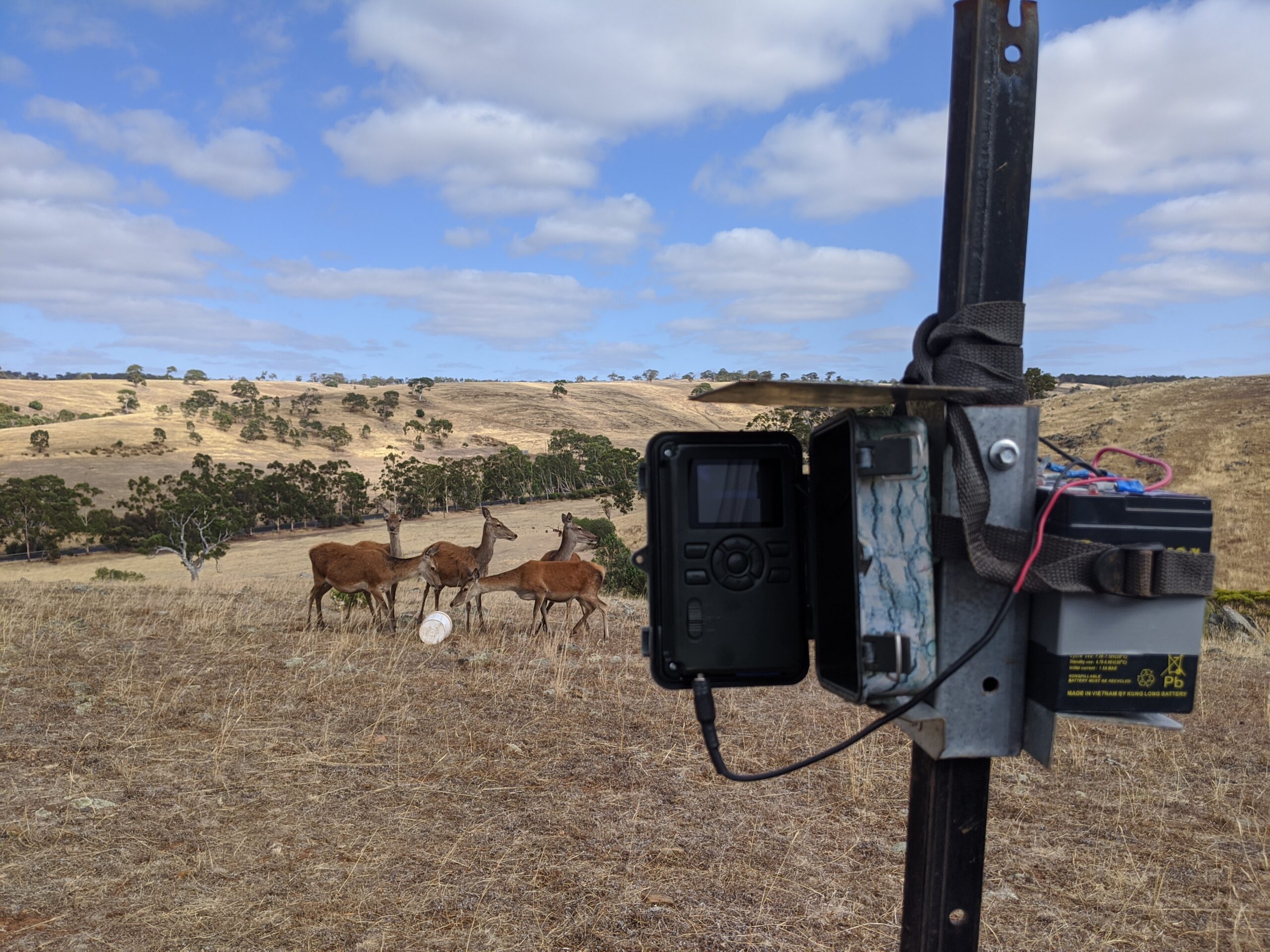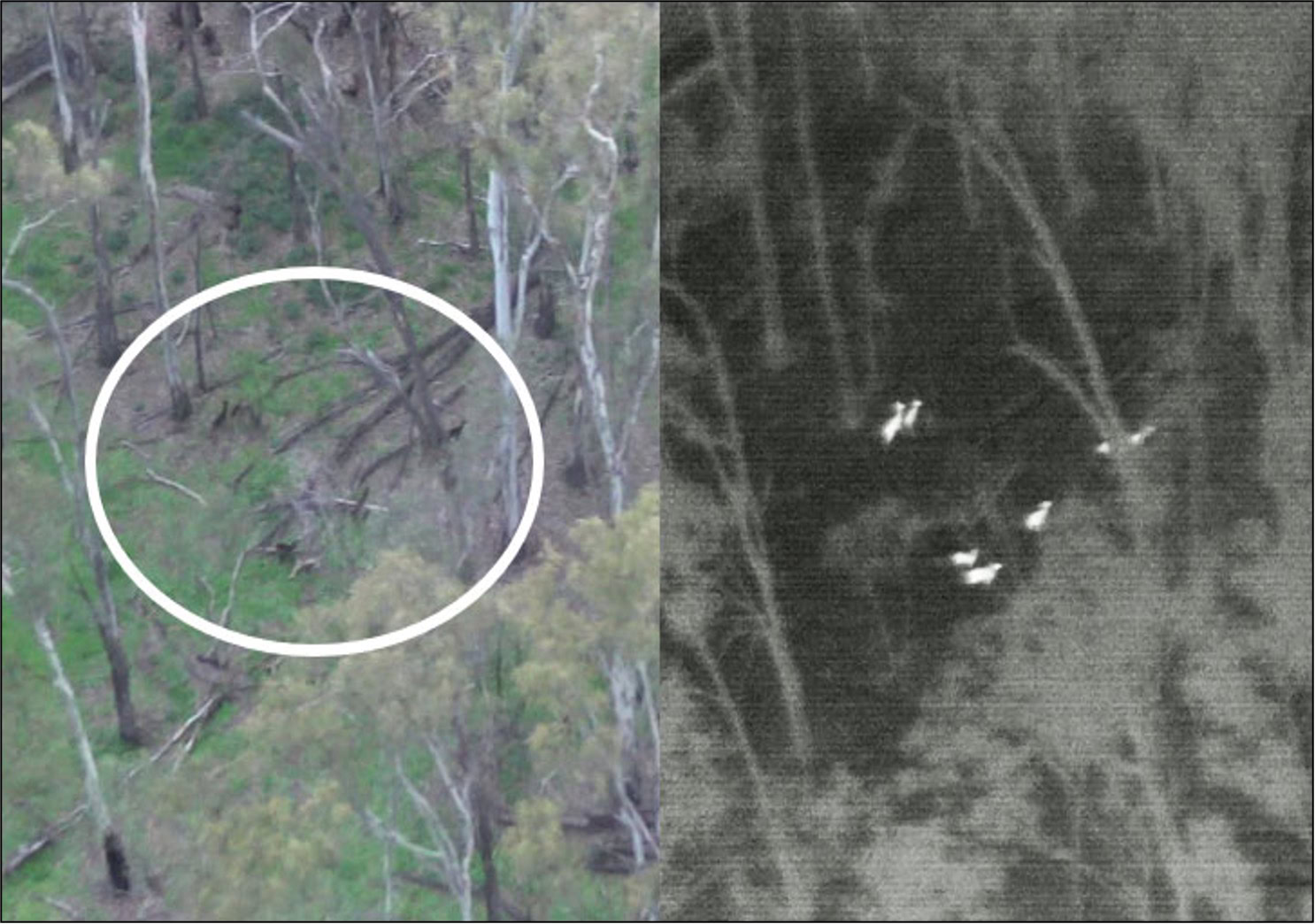
Control Tools
Efficient, humane feral deer control programs that adhere to animal welfare standards are crucial for landscape-scale success. Coordinated efforts across neighbouring properties—using tools such as aerial or ground shooting, traps, exclusion fencing, spotlights, thermal imaging, and noise suppressors (per State regulations)—effectively manage deer populations while prioritising welfare.


Ground Shooting
Ground culling, involving shooting, proves effective in reducing small to moderate numbers of feral deer, particularly in peri-urban and urban areas. This method, often carried out at night using vehicles, foot, spotlights, night vision, thermal scopes, drones, or detection dogs, is time-consuming, labour-intensive, and requires skilled operators. Suppressors, in accordance with State regulations, reduce shooting noise, allowing more deer to be culled at once while minimising disturbance for residents.
Professional shooters, commercial harvesters, land managers, their staff, or volunteer shooters conduct ground culling for feral deer. All involved must possess appropriate firearms, licenses, and property access approvals per State regulations. Ground culling must adhere to National Standard Operating Procedures and the National code of practice for the effective and humane management of feral and wild deer.
Recreational shooting, motivated solely by obtaining meat or trophies, generally fails to sufficiently reduce feral deer numbers and meet control program goals in many parts of Australia.
Introducing ground shooting of feral deer
Examples of ground shooting information available around Australia
NSW Deer SOP1 - Ground shooting of feral deer
Can recreational hunting control feral deer
Upper Ovens Landcare - Deer Control Toolkit

Aerial Shooting
Aerial culling (shooting) from helicopters is a highly effective, often primary method for rapidly reducing large numbers of feral deer across extensive hectares. This approach is particularly valuable in inaccessible areas and for eradicating small, sparse, or cryptic populations. Recent aerial programs, especially those leveraging high-quality thermal detection technology, have shown notable success.
Skilled shooters and pilots adhere to stringent protocols and accreditations, such as the FAAST training system in NSW, to ensure humane and safe culls. Operational plans are approved by the Civil Aviation Safety Authority. Thorough planning, including community engagement and securing land access agreements from all landholders, is essential for successful programs. All aerial culling must comply with the National Standard Operating Procedure: Aerial shooting of feral and wild deer.
Introducing aerial shooting of feral deer
National Aerial Shooting Workshop Proceedings 20-21 Feb 2024

Thermal Tools
Advancements in thermal technology are rapidly progressing and are poised to assume a more significant role in surveillance and control efforts in Australia. This technology encompasses thermal scopes affixed to firearms (enhancing accuracy) and thermal video cameras, either mounted on drones (for detection and communication with ground shooters) or handheld from helicopters or vehicles (providing a wide field of view).
Thermal cameras distinguish the contrast between the body heat of deer and the cooler air and ground. High-quality thermal cameras can detect a greater number of animals in vegetated areas compared to the human eye.
Introducing thermal tools for monitoring deer

Drone pilots gaining the high ground in the fight against feral pests – Landline
How thermal-assisted aerial control technology was trialled in the Limestone Coast in 2021

Exclusion Fencing
Exclusion fencing serves to safeguard environmental or agricultural assets from the intensive impact of feral deer, especially when shooting or trapping is impractical. It is commonly employed to shield newly planted trees from browsing or trampling and can restrict deer movement across the landscape or guide them into traps.
Establishing and maintaining exclusion fencing is costly, given that feral deer are adept at jumping over or pushing under fences. To effectively exclude them, fences should be a minimum height of 1.9 meters, equipped with sturdy posts, mesh secured to the ground, strainer wires to maintain tension, and occasionally featuring an overhang at the top.
Introducing exclusion fencing of feral deer

Find out more about fencing used in the commercial deer industry
Fencing to protect assets - Upper Murray Landcare Network
Using exclusion fencing to manage deer impacts in Australia - CISS

Commercial Harvesting
Commercial harvesters efficiently remove moderate numbers of feral deer, utilising them for human or pet consumption. In coordinated programs, harvesters often serve as an initial step to reduce feral deer numbers until harvesting is no longer viable in the area. Subsequently, professional shooters, landholders, or volunteers can manage the remaining low deer population.
Commercial harvesters must adhere to high standards of animal welfare outlined in the National Code of Practice for the Effective and Humane Management of Feral and Wild Deer, along with the National Standard Operating Procedure for Ground Shooting. Biosecurity protocols are implemented in compliance with relevant regulations.
Game meat processors throughout Australia can connect harvesters with land managers or landholders can register through FarmerASSIT, a free service linking farmers with accredited shooters.
Commercial harvesting of feral deer Q&A

Trapping
Deer traps are crucial in areas where shooting is impractical or prohibited, especially in urban zones frequented by feral deer. Ranging from entire paddocks to small areas, these traps come in commercial designs or are custom-built by land managers. The trap door, activated by remote triggers, trip wires, or a one-way earthen ramp, is typically left open for days or weeks to habituate deer. Operators provide shade, food, and water for trapped deer, and set traps require daily checks.

Trapping of feral deer

Deer Aggregator
The deer aggregator, a novel control tool, is undergoing trials in Queensland, New South Wales, Tasmania, and South Australia. Designed as a feeder, it gathers feral deer to a specific location, facilitating more efficient ground shooting. The aggregator allows deer access to feed while preventing entry by native animals like kangaroos and possums.
This tool proves beneficial in peri-urban areas or locations aiming to redirect deer to increase the effectiveness of ground shooting. The Centre for Invasive Species Solutions and the Department for Primary Industries South Australia collaborate on the development of this control tool.
Introduction to the Feral Deer Aggregator
Alternative localised control tools
The following methods are applicable on a localized scale to address a small affected area or protect valuable assets. However, they do not decrease the overall feral deer population and are not long-term solutions, as the deer may relocate to nearby areas.
Deterrents:
Lights, noises, and chemical smells can be effective on a small scale, especially along known road crossings or areas where deer need to be redirected to less sensitive locations.
Guard Dogs:
Trained guard dogs can effectively deter feral deer from small properties.
Sterilisation:
Chemical sterilisation treatments have not proven successful in reducing feral deer populations in Australia. This process is costly, labour-intensive, and does not address the immediate environmental, economic, and social impacts posed by feral deer on the landscape.
National Feral Deer Action Plan
Developing Australia’s Management Strategy
